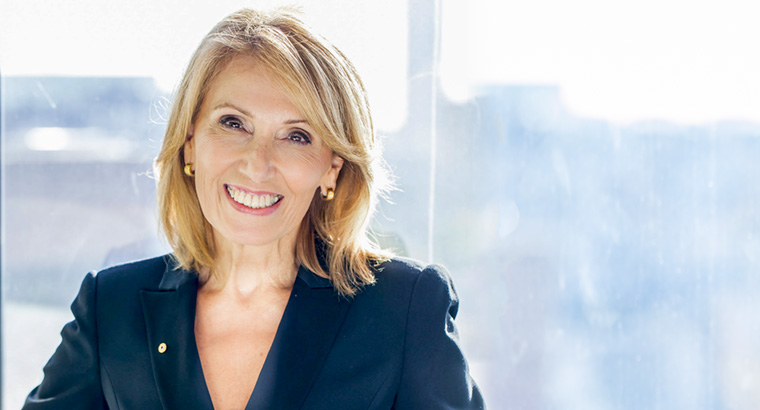News
Understanding breast cancer risk factors
A new website from Cancer Australia can help women and health professionals better understand the evidence behind 68 different risk factors for breast cancer.
 Cancer Australia has released a new website that outlines 68 different risk factors for breast cancer and explains the evidence behind them.
Cancer Australia has released a new website that outlines 68 different risk factors for breast cancer and explains the evidence behind them.
Breast cancer is expected to be Australia’s most commonly diagnosed cancer in 2018 – for the first time since the 1980s. It is also estimated to be the second most common cause of cancer death among females this year.
Some of the most serious risk factors for breast cancer, such as ageing and family history, can only be monitored, not changed. But others, as long as they are clearly understood, can be modified.
‘At a population level, one in four breast cancers are potentially preventable through lifestyle changes,’ Cancer Australia CEO Dr Helen Zorbas told newsGP.
‘If all of those [modifiable factors] were observed, the potential is there to reduce one in four breast cancers diagnosed in Australia.’
Fostering greater understanding of such risk factors, including what do to about them, is the goal behind Cancer Australia’s new website, ‘Breast cancer: The risk factors’, which was launched earlier this week.
The site is the culmination of an 18-month process in which evidence relating to breast cancer was gathered, reviewed and assessed by a team of experts from across the field. The end result is a comprehensive report and a website that presents the information in an easily accessible format that women and health professionals can use to learn more about 68 different risk factors for breast cancer.
‘This was an opportunity to review the evidence but, importantly, to also communicate quite complex risk information in a readily accessible way,’ Dr Zorbas said. ‘The new website has multi-layered and tailored information that you can look at in a glance, or you can delve deep.
‘So, especially for health professionals, there is the opportunity to look deeper and take in the full review of the evidence which sits behind all the statements made around the different factors.’
Information on risk factors is divided into searchable categories, including risk factors, protective factors and unproven factors. Some of the evidence reviewed has helped to strengthen knowledge of already-known risk factors, and further inform responses to those risks.
‘For example, about 8% of breast cancers in post-menopausal women are attributable to overweight or obesity,’ Dr Zorbas said.
‘So there’s good information about ways in which that risk can be managed, such as what is a healthy weight to try and maintain, and looking at circumference around the waist: a circumference of around 80 cm or less is a healthy measurement, but for every 10 cm above that, the risk increases by about 6%.’

CEO of Cancer Australia Dr Helen Zorbas hopes the new website helps to spark conversations about breast cancer risk within the community.
Cancer Australia’s review has also further solidified the importance of physical activity in everyday life.
‘The more exercise you do, the greater the benefit,’ Dr Zorbas said. ‘But even small amounts of exercise or physical activity confer a benefit compared to no activity, so that’s a really important message – you don’t have to be a super athlete, even just normal activities, walking or doing things around the house, confer a benefit compared to not doing those things.’
There has also been evidence that confirms suspicions regarding some risk factors.
‘There’s now a number of studies which show that tobacco smoking may be associated with an increased risk of breast cancer,’ Dr Zorbas said.
The website also covers protective factors, such as the consumption of dairy, orange-coloured vegetables and foods containing calcium. In addition, it helps to debunk some things people have thought to be risk factors in the past.
‘One of the aspects to the website is unproven or unlikely factors, areas that have been hypothesised, but for which the evidence isn’t there to back up the hypothesis,’ Dr Zorbas explained.
‘Some of these fall into the myth or misconception categories, such as wearing bras, using underarm deodorants and antiperspirants, or hair dyes.’
Dr Zorbas hopes the website will help to spark conversations about breast cancer risk, especially between women and their GPs.
‘I think breast cancer is a concern in the community and amongst women, and because the information on the website is so readily accessible, easy to navigate and layered, I think it’s likely to spark community interest or individual women’s interest,’ she said.
‘There may be women who are concerned about their family history who will want to speak to their GP about that.
‘But there’s also an important opportunity that can be taken up during that consultation to talk about ways in which lifestyle can be modified to manage risk.’
breast cancer breast cancer risk Cancer Australia
newsGP weekly poll
Would it affect your prescribing if proven obesity management medications were added to the PBS?